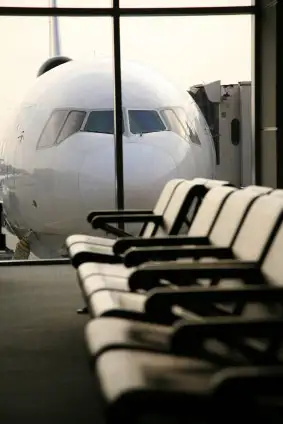
Want to receive stories like this every day? Subscribe to our free Deal Alert newsletter!
Airlines are in the midst of posting their fourth-quarter and full-year financial results for 2010, and the numbers, so far, have been pretty good. Delta and Southwest have already posted profits, and the industry as a whole is expected to be in the black. And as the Associated Press (AP) reports, this success can be tied to one thing: Flying less.
“After a decade of multibillion-dollar losses, U.S. airlines appear to be on course to prosper for years to come for a simple reason: They are flying less,” writes the AP’s David Koenig. “Profit margins at big airlines are the highest in at least a decade, according to the government. The eight largest U.S. airlines are forecast to earn more than $5 billion this year and $5.6 billion in 2012.”
It’s a simple equation: Cutting available seat capacity during the recession allowed airlines to stabilize fares. Now that travel demand is coming back, maintaining those capacity levels lets airlines raise fares. “Flights are more crowded than they’ve been in decades,” Koenig writes. “On domestic flights, fewer than one in five seats are empty. Space is even tighter over the summer and holidays.” The result? Fares are up 14 percent year-over-year, analyst Bob Harrell tells the AP.
All the fees certainly help, too. Initially implemented as an emergency measure in the face of rising fuel costs, fees are now boosting profit margins rather than merely keeping airlines afloat.
Fuel prices are still a threat, and a spike in costs like the one airlines endured in 2008 could derail the advances in profitability carriers have made since then. Still, the consensus is that airlines are better positioned now than they have been in years. “The industry was profitable in 2000, 2006 and 2007, when the economy was roaring,” Koenig writes. “But those boom years masked the industry’s underlying problems, including high costs and more seats than travelers demanded. During 2008 and 2009, airlines lost a combined $23 billion, but they were also attacking their problems, setting the stage for a comeback in 2010.” Solving those problems involved cutting money-losing flights, retiring older planes, adding the aforementioned fees, and consolidating.
“The industry is in the best position—certainly in a decade—to post profitability,” Southwest Airlines CEO Gary Kelly tells the AP. “The industry is much better prepared today than it was a decade ago.”
None of this does consumers any favors, of course. We’re the ones paying higher fares, forking over fees, and flying on crowded planes. But a healthy, competitive industry is better than a choking, dying one, even if it means our wallets get pinched. Right?
We hand-pick everything we recommend and select items through testing and reviews. Some products are sent to us free of charge with no incentive to offer a favorable review. We offer our unbiased opinions and do not accept compensation to review products. All items are in stock and prices are accurate at the time of publication. If you buy something through our links, we may earn a commission.
Related
Top Fares From
Today's Top Travel Deals
Brought to you by ShermansTravel
Greece: 9-Night Vacation, Incl. Meteora &...
Exoticca
 vacation
$2099+
vacation
$2099+
7- to 28-Night Mediterranean Cruises w/Onboard...
Holland America Line
 cruise
$1399+
cruise
$1399+
Ohio: Daily Car Rentals from Cincinnati
85OFF.com
 Car Rental
$19+
Car Rental
$19+



